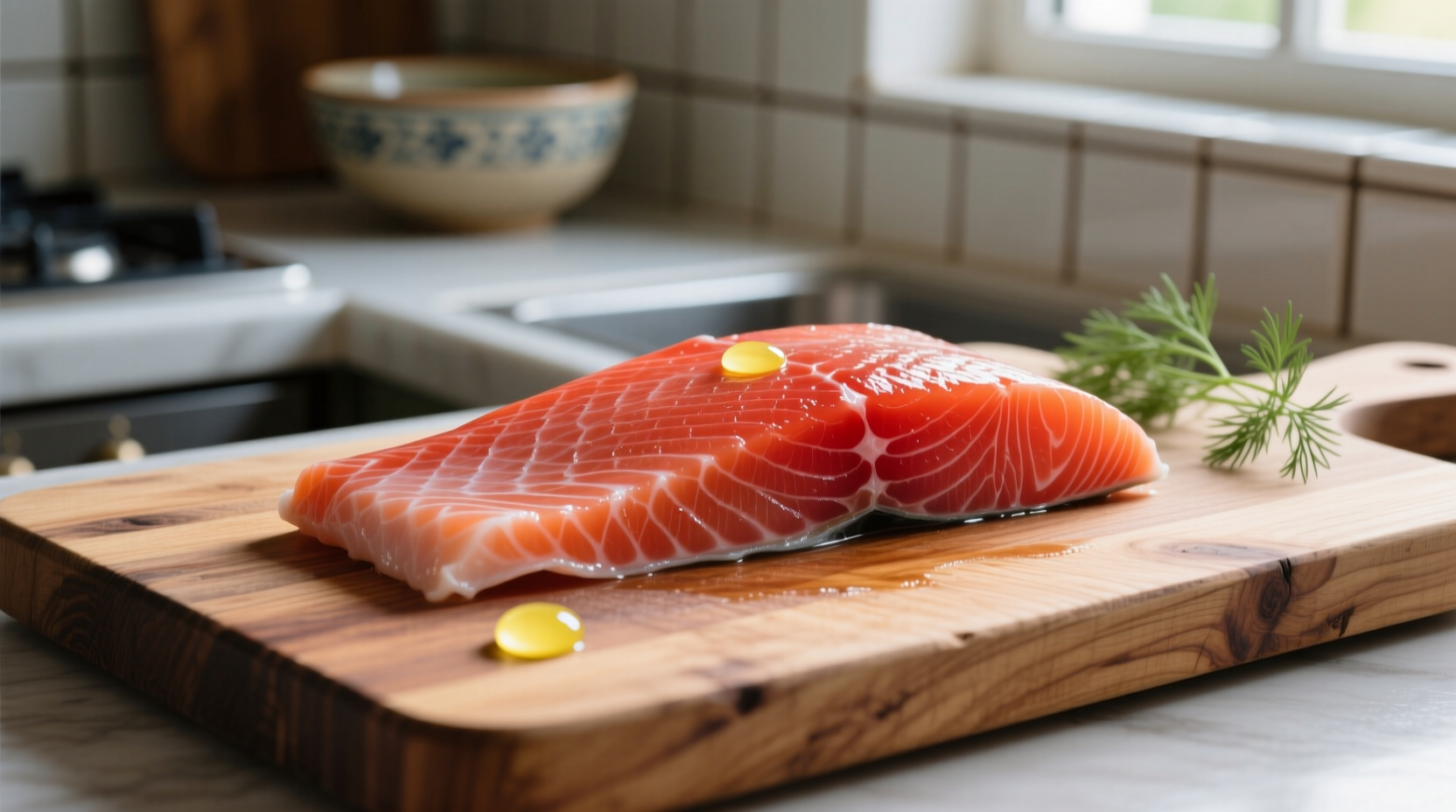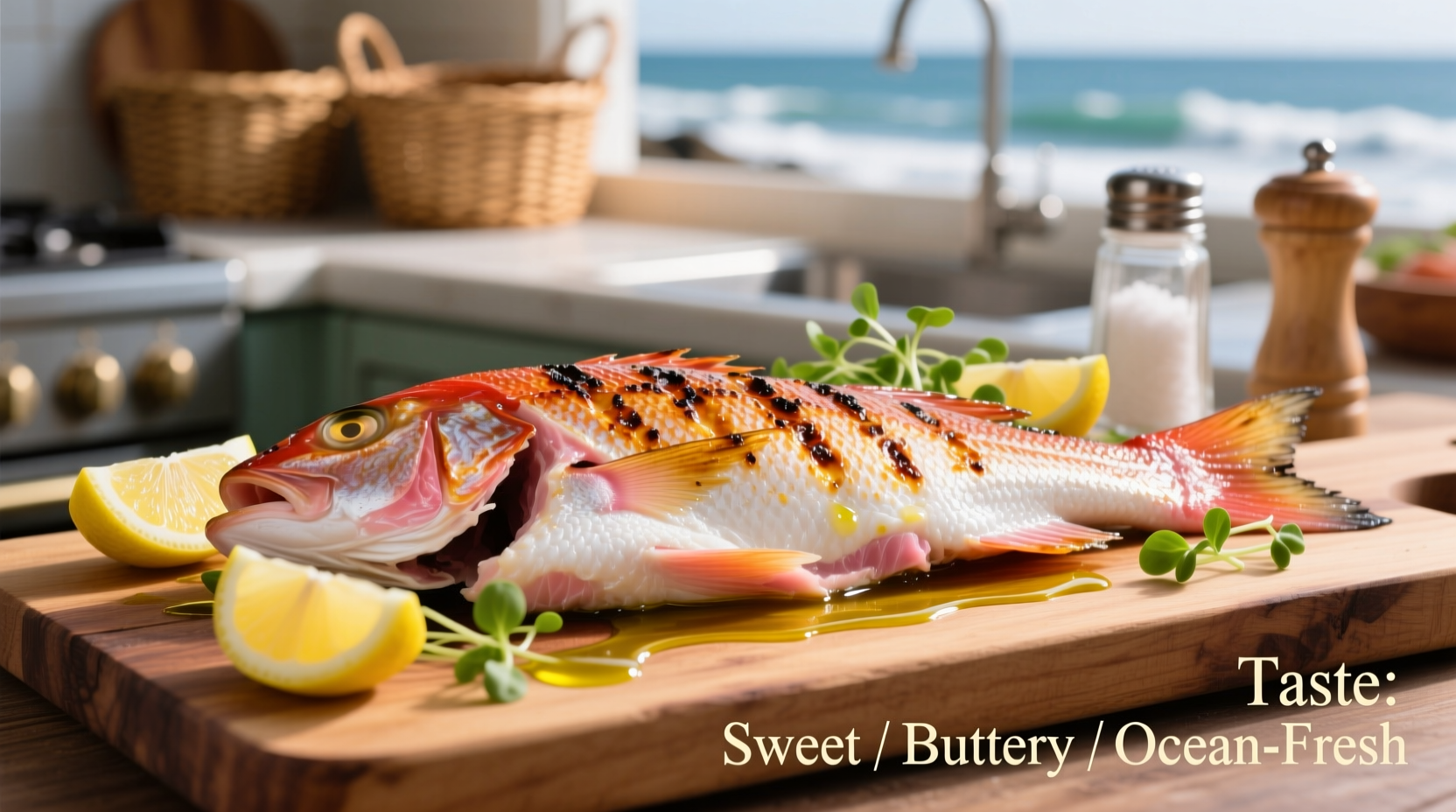If you've ever wondered what does red snapper taste like, you're in for a culinary revelation. This popular Gulf Coast fish offers a perfect balance that bridges the gap between bold-flavored seafood and extremely mild varieties. Unlike stronger-tasting fish such as mackerel or bluefish, red snapper provides a clean, approachable flavor that serves as an ideal canvas for creative cooking while maintaining its distinctive character.
Breaking Down the Red Snapper Flavor Profile
Understanding the taste of red snapper fish requires examining several sensory dimensions. The flavor sits firmly in the mild category but with subtle complexity that sets it apart from other white fish. When properly prepared, you'll notice:
- Sweetness level: A delicate natural sweetness that intensifies when cooked
- Nutty undertones: Hints of almond or hazelnut that emerge especially when pan-seared
- Aftertaste: Clean finish without the oily residue found in fattier fish
- Aroma: Fresh ocean scent without strong 'fishy' notes when properly handled
The texture significantly contributes to the overall experience of what red snapper tastes like. Its firm, lean flesh maintains structure during cooking while still offering that satisfying flakiness characteristic of quality white fish. This structural integrity makes it ideal for grilling or pan-searing without falling apart.
How Red Snapper Compares to Other Popular Fish
Understanding red snapper vs tilapia taste or other common varieties helps home cooks make informed choices. The table below shows key flavor and texture comparisons:
| Fish Variety | Flavor Intensity | Sweetness Level | Texture | Best Cooking Methods |
|---|---|---|---|---|
| Red Snapper | Mild with nutty notes | Moderate | Firm, large flakes | Grilling, baking, pan-searing |
| Grouper | Moderate | Low | Very firm, meaty | Grilling, broiling |
| Cod | Very mild | Low | Soft, delicate flakes | Poaching, baking |
| Tilapia | Very mild | Low | Soft, small flakes | Pan-frying, baking |
| Snook | Mild to moderate | Moderate | Firm with medium flakes | Grilling, blackening |
According to NOAA Fisheries, red snapper's distinctive flavor profile makes it particularly valued in Gulf Coast cuisine where it's considered a culinary staple. The agency notes that proper handling immediately after catch significantly preserves the fish's delicate flavor characteristics.
Maximizing Flavor: Best Cooking Approaches for Red Snapper
Knowing how to cook red snapper to enhance flavor separates adequate preparations from exceptional ones. The fish's lean composition means it benefits from cooking techniques that prevent drying while highlighting its natural sweetness.
Top preparation methods include:
- Pan-searing with lemon-herb butter - creates a flavorful crust while keeping interior moist
- Grilling with citrus marinade - the mild smoke complements rather than overwhelms
- Whole baking with aromatics - preserves natural juices and enhances presentation
- Blackening with mild spices - works well without overpowering the delicate flavor
Florida Sea Grant research confirms that red snapper's lean composition means it cooks faster than fattier fish. Their studies show optimal internal temperature for peak flavor and texture is 130-135°F (54-57°C), slightly below the traditional 145°F seafood guideline, as carryover cooking will bring it to proper doneness.
When Red Snapper Shines (and When to Choose Alternatives)
Understanding the context boundaries for red snapper ensures you select the right fish for your culinary goals. While versatile, red snapper has specific strengths and limitations:
Situations where red snapper excels:
- When you need a fish that holds shape for presentation-focused dishes
- For recipes requiring moderate cooking times without falling apart
- When serving seafood-averse diners who prefer milder flavors
- In citrus-based preparations that complement its natural sweetness
When to consider alternatives:
- For rich, creamy sauces that work better with stronger-flavored fish
- When extremely quick cooking is required (try sole instead)
- For raw preparations like ceviche (snapper can work but has stronger flavor than sea bass)
- When budget constraints exist (tilapia offers similar mildness at lower cost)
According to the Marine Stewardship Council, sustainability considerations also affect your choice. While Gulf of Mexico red snapper populations have recovered significantly since 2010, choosing certified sustainable sources ensures you're making an environmentally responsible decision without compromising on what red snapper tastes like.

Buying and Preparing Tips for Optimal Flavor
To experience the true taste of red snapper fish, proper selection and preparation are crucial. Follow these professional tips:
When purchasing:
- Look for firm flesh that springs back when gently pressed
- Choose fillets with translucent pinkish hue rather than dull gray
- Smell should be clean and oceanic, not overly fishy
- Ask when it was caught - same-day or previous evening is ideal
Preparation essentials:
- Rinse under cold water and pat thoroughly dry before cooking
- Salt fillets 15-20 minutes before cooking to enhance natural sweetness
- Avoid overpowering marinades - let the fish's flavor shine
- Cook skin-on for added flavor and easier handling
Professional chefs note that the why does red snapper have sweet flavor question relates to its diet and habitat. Found primarily in warm Gulf waters around reefs and structures, red snapper consumes crustaceans and smaller fish that contribute to its distinctive flavor profile. This natural diet creates the subtle sweetness that makes it so appealing to home cooks exploring what does red snapper taste like.
Perfect Pairings: Complementing Red Snapper's Natural Flavor
Understanding flavor chemistry helps create dishes where red snapper truly shines. The fish's mild sweetness pairs beautifully with:
- Citrus elements - lemon, lime, and orange enhance without overwhelming
- Herbs - thyme, parsley, and chives complement without dominating
- Mild spices - paprika, coriander, and white pepper add dimension
- Light sauces - tomato-basil, lemon-caper, or light garlic butter
Avoid heavy cream sauces or strongly flavored ingredients that mask red snapper's delicate profile. The goal when exploring what does red snapper taste like is to enhance, not cover up, its natural characteristics.
Frequently Asked Questions
Does red snapper have a strong fishy taste?
No, red snapper has a mild, slightly sweet flavor with delicate nutty undertones. It's considered one of the less 'fishy' tasting varieties, making it ideal for those new to seafood. The flavor remains clean and approachable when properly handled and cooked.
How does red snapper compare to grouper in taste?
Red snapper has a milder, slightly sweeter flavor than grouper with more pronounced nutty notes. Grouper offers a more substantial, meatier texture and stronger ocean flavor. Red snapper's delicate profile makes it more versatile with various cooking methods and flavor pairings compared to the more robust grouper.
Why does my red snapper taste bland?
Bland red snapper typically results from improper handling or cooking. Ensure you're using fresh fish (same-day or previous evening catch), season properly with salt 15-20 minutes before cooking, and don't overcook. Red snapper's lean composition means it dries out quickly, losing its natural sweetness when cooked beyond 135°F internal temperature.
What's the best way to cook red snapper to preserve its flavor?
Pan-searing with minimal seasoning preserves red snapper's delicate flavor best. Heat oil until shimmering, season fish with salt and pepper, and cook skin-side down first for 3-4 minutes until golden, then flip and finish cooking for 2-3 minutes. This method creates a flavorful crust while keeping the interior moist and allowing the natural sweetness to shine through.
Is red snapper sustainable to eat?
Gulf of Mexico red snapper populations have recovered significantly since 2010 due to strict management. The species is now considered a 'Good Alternative' by Monterey Bay Aquarium Seafood Watch. Look for MSC-certified red snapper to ensure you're making an environmentally responsible choice while enjoying its distinctive flavor.











 浙公网安备
33010002000092号
浙公网安备
33010002000092号 浙B2-20120091-4
浙B2-20120091-4